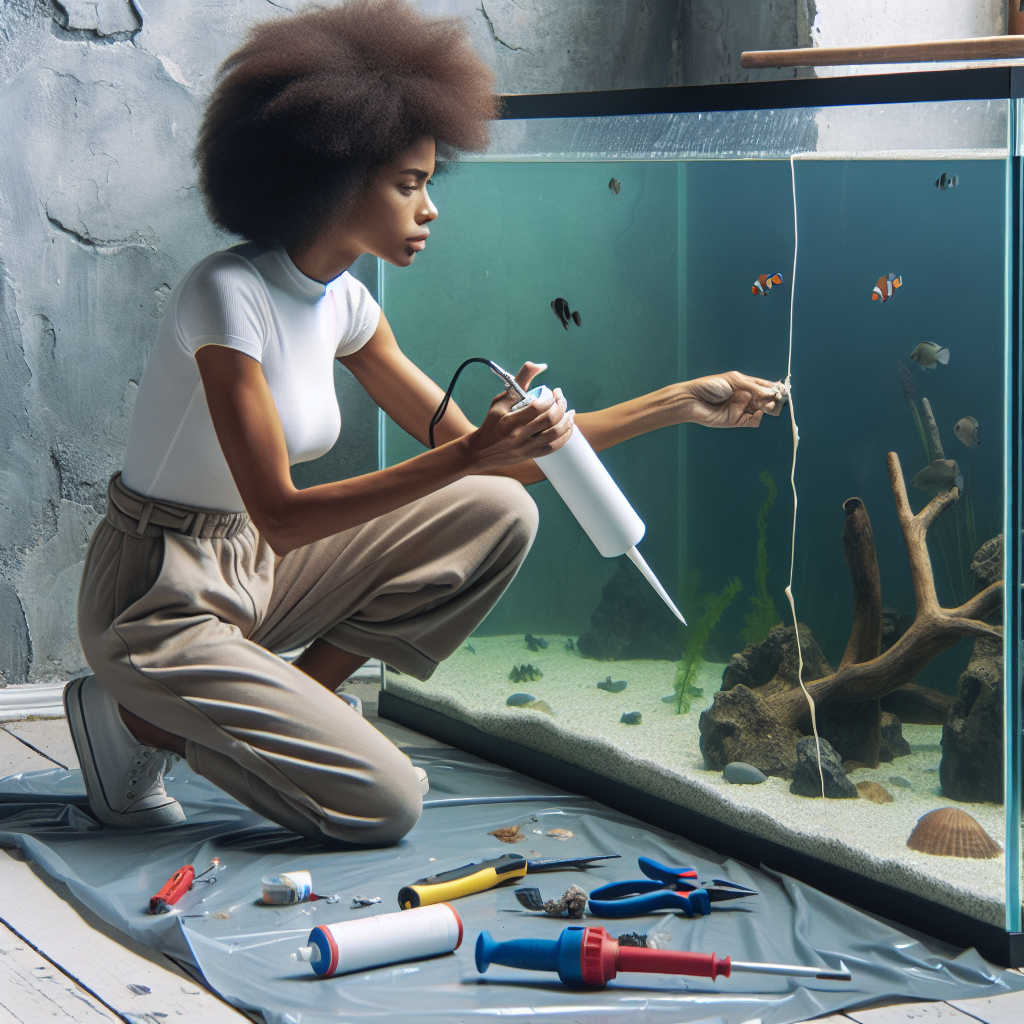Understanding Aquarium Leaks
An aquarium is not just a container for fish; it is a delicate ecosystem that demands care and attention. Part of this care includes the task of detecting and swiftly repairing any leaks. To the dismay of many aquarium enthusiasts, leaks can occur due to various reasons, such as faulty seals, cracks in the glass, or improper tank setup. Recognizing and addressing these issues early can save not only the lives of the fish but also prevent potential damage to your home.
Leak Detection Methods
Detecting a leak in an aquarium can be a matter of keen observation. Look for signs such as unexplained water on the floor, wetness on the outside of the tank, or a noticeable drop in the water level that isn't due to evaporation. Sometimes, the issue can be as minor as condensation or as major as a crack. Pay extra attention to the corners and seams of the tank, where leaks are most likely to start.
DIY Leak Repair
When a leak has been located, immediate action is required. For minor leaks, the following do-it-yourself steps might be your first line of defense:
- Drain the tank: Partially or completely drain your aquarium, depending on the leak's severity and location.
- Clean and dry: Ensure the leaky area is thoroughly dried and free from algae or debris.
- Apply aquarium-safe sealant: Use a 100% silicone sealant that is safe for aquarium use, applying it smoothly over the leak. Consult our maintenance and care section for more information on how to select the right products.
- Let it cure: Follow the manufacturer's instructions for curing time before refilling the tank.

Preventative Measures
Taking preventative steps to avoid leaks can also be beneficial. This includes regularly checking the tank for any signs of wear, such as small cracks or deteriorating seals, and always handling and moving the tank with care. More information on how to properly handle and move an aquarium can be found in our setting up your aquarium guide.
Critical Repair Considerations
For more serious cases, it may be necessary to completely replace a pane of glass or the entire tank. This process requires a lot more precision and expertise. Remember, when dealing with larger tanks, the pressure exerted by the water can be significantly greater, making the repair more complex and the consequences of a mistake more severe.

Professional Help
If you are uncertain about your ability to repair a leak, especially with larger tanks, seek professional help. There are aquarium specialists who can provide repair services or offer advice on the best course of action. Not only will professional help ensure that the repair is done correctly, but it will also minimize stress on the aquatic life and reduce the chances of future issues. For complex repairs, consider professional services like those offered by Kemah Aquarium's maintenance program.
Select Repair Products
Choosing the right products is crucial for repairing an aquarium leak effectively. Consider these reliable options:
|
J-B Weld 8277 WaterWeld Epoxy Putty Stick - 2 oz., Off White |
Troubleshooting Tips
If you're in the process of addressing a leak, here are some quick troubleshooting tips:
- Never use toxic materials: Only use repair materials that are labeled safe for aquarium use to avoid harming your fish.
- Exercise patience: Don't rush the cure time for sealants as this can result in a weaker bond.
- Monitor water quality: Following any repair, monitor the water conditions closely as changes can occur due to the disruption.
Instructional Resources
For visual learners and those new to aquarium care, instructional videos can greatly assist in the repair process. Here are some helpful tutorials on detecting and repairing aquarium leaks:
Ensuring Future Stability
Ultimately, the key to dealing with aquarium leaks is preventive care and immediate action when issues arise. Regular maintenance checks, careful handling during cleanings and moves, and the use of quality products for repairs will all contribute to the long-term stability and health of your aquatic haven.